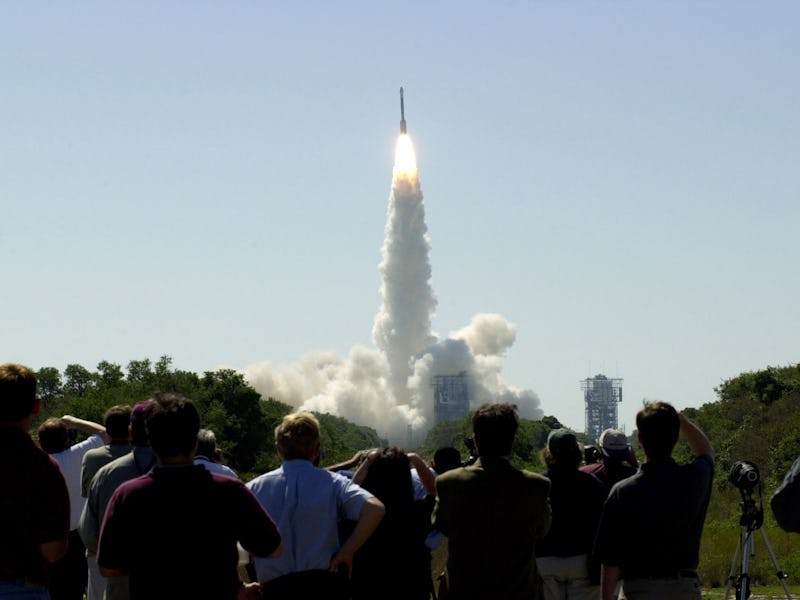15 Years Ago, the Mars Odyssey Launch Revived Our Obsession With the Red Planet
Love the Curiosity Rover? Excited about water on Mars? You have Odyssey to thank for all that.

A lot of young people might not remember, but just a little over 15 years ago, nobody really gave a shit about Mars.
People didn’t Google “Mars” every day just to see if there was a new discovery; they didn’t fawn over new images of the red planet’s landscape (not the least because we didn’t really have images to look at); we weren’t anxiously picking the brains of different researchers to see what the chances were of finding signs of past or current life on the planet.
And then NASA launched the 2001 Mars Odyssey spacecraft exactly 15 years ago on board a Delta II rocket from Cape Canaveral Air Force Station in Florida. And with a single mission, NASA’s Mars exploration program rose from the ashes and has shone bright than ever before.
The Mars Odyssey mission came out of the shadow of two back-to-back failed Mars missions just two years earlier, when both the Mars Climate Orbiter and the Mars Polar Lander crashed on the surface due to logistical and hardware errors, respectively. If NASA was going to continue its program to explore the red planet, it needed to a success story to build upon.
The Mars Odyssey orbiter.
Odyssey has paid off better than hoped. The orbiter completed its primary mission in 2004, but has been repeatedly extended due to how valuable its data collection has been to the study of the planet’s surface. Like the Hubble Space Telescope, the Martian orbiter has become a symbol of longevity in space exploration and research.
To put its 15-year life into perspective, here’s a list of hit movies released in 2001:
- Bridget Jones’ Diary
- Amelie
- Freddy Got Fingered (an Inverse favorite)
- Blow
- Joe Dirt
- Josie and the Pussycats
“Every day for more than five years, Odyssey has been extending its record for how long a spacecraft can keep working at Mars,” said mission project manager David Lehman in a news release. “The spacecraft is remarkably healthy, and we have enough fuel to last for several more years.”
What exactly has Odyssey found? Within its first year of orbiting Mars, its instruments picked up on signs of water-ice close to the Martian surface in certain regions — launching a renewed interest into whether Mars was or perhaps still is habitable. The mission has also collected a lot of data important to understanding the geology and radioactivity of the surface environment.
In addition. Odyssey has been a critical tool for helping coordinate plans for other Mars missions well — especially in choosing where to send the various Mars rovers that have descended onto the surface.
Ultimately, the most important role for the orbiters has been to lay the groundwork for how NASA will go about in sending astronauts to Mars and work to establish a permanent human outpost on the planet. That’s a lot ways away, but the surface data the spacecraft has captured will play an essential role for deciding where we want to land, where we want to build infrastructure, and what parts of the planet we’ll want to study directly.
Basically, if you’re into Mars these days, give thanks to Odyssey. Without the little bugger, we’d probably be making plans to head over to Venus or some bullshit like that.